The 2015 Internet Of Things 50

The Future Is Now
Everybody is trying to catch the emerging Internet of Things wave that will connect billions of previously unconnected devices. The estimated $19 trillion IoT opportunity not only has IT leaders like AWS, Cisco, IBM and Google licking their lips, but also some innovative IoT startups such as Bastille, IFTT and Davra Networks who are focusing on a variety of solutions around areas like data analytics and security.
The solution and services market for IoT will catapult to $1.7 trillion in 2020, according to the research firm IDC, while during that time the market will expand at a CAGR of 17 percent.
CRN has complied 50 companies who are building tailored-made IoT solutions that channel partners need to know.
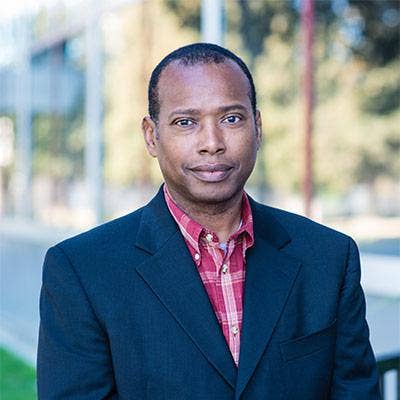
Aeris Communications
TOP EXECUTIVE: Marc Jones, President and CEO
Aeris is service provider that touts itself as having the only cellular network designed and built exclusively for machines. The Santa Clara, Calif.-based company has its purpose-built AerCore connectivity platform, along with its IoT analytics platform, AerVoyance. AerVoyance provides analytics to manage and monitor IoT and M2M deployments in real-time.
Aeris in January launched the Neo Affiliate Program that brings IoT network connectivity services to the channel via a recurring revenue model.
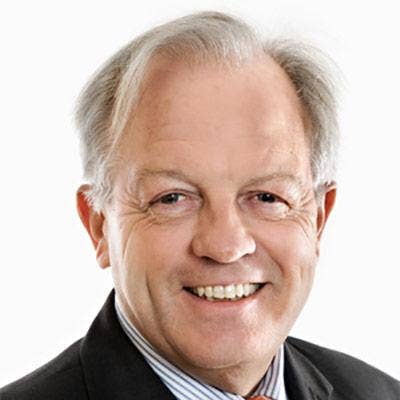
Alcatel-Lucent
TOP EXECUTIVE: Phillippe Camus, Chairman and Interim CEO
The France-based global telecommunication equipment maker plans to leverage its established market position to help customers build and deliver successful IoT applications.
In September, Alcatel-Lucent acquired Mformation, a provider of mobile and IoT security and device management solutions for mobile operators, service providers and enterprises. The company says it plans to use Mformation to accelerate its technology innovation in IoT security and device management.
The company also partnered with Sequans Communications this year to collaborate on enabling key technologies for IoT by providing the "4G Kit for IoT" -- a new IoT prototyping platform. In April, Nokia announced its plan to acquire Alcatel-Lucent for $16.6 billion, a deal expected to close in the first half of 2016.
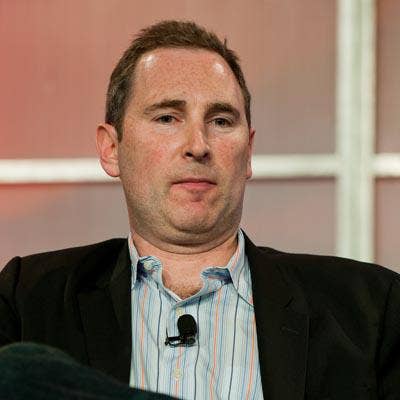
Amazon Web Services
TOP EXECUTIVE: Andy Jassy, senior vice president
Amazon Web Services has its flagship IoT managed cloud platform that lets connected devices easily and securely interact with cloud applications and other devices. The platform can support billions of devises and makes it easy to use AWS services like AWS Lambda, Amazon Kinesis, Amazon S3 and Amazon Machine Learning to build IoT applications that gather, process, analyze and act on data generated by connected devices without having to manage any infrastructure.
At the Seattle-based cloud behemoth's recent Global Partner Summit, AWS launched an array of new IoT services and features, including AWS Schema, a free tool for migrating between database engines; Amazon Inspector, a service that performs automated assessments that identify security or compliance concerns when deploying applications; and QuickSight, which allows companies to create visualizations and derive analytic insights without doing any complex data modeling.
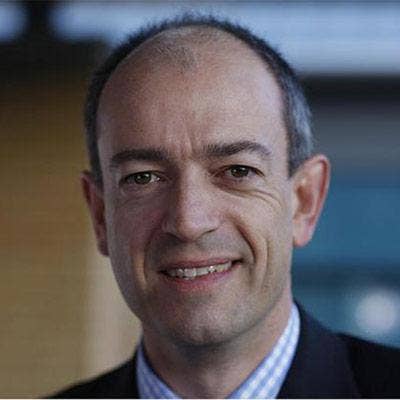
ARM
TOP EXECUTIVE: Simon Segars, CEO
The Cambridge, U.K.-based chip designer is diving deep into IoT with with a bevy of offerings, including a lineup of processors to power everything from smartwatches to smart home appliances to health care monitors, as well as its mbed IoT operating system. The offering aims provide a common platform that fosters an ecosystem for developing connected IoT devices where the deployment of commercial, standards-based IoT devices is possible at scale.
The company says its IoT Subsystem for Cortex-M processors allow teams to create IoT endpoints quickly with low risk. ARM's scalable IP solutions are designed to target everything from sensors to servers.
ARM pushed into the connected devices market earlier this year with its purchase of IoT security software company Offspark. In July, ARM expanded its IoT security capability with the acquisition of Israel-based Sansa Security, a provider of hardware security IP and software for advanced system-on-chip components deployed in IoT and mobile devices.
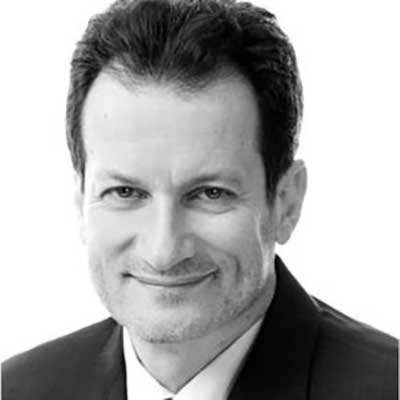
Aspenta
TOP EXECUTIVE: Walid Moneimne, CEO and Founding Partner
The mobile network operator and IoT developer enables connectivity for M2M devices. Its portfolio includes consumer and business applications -- such as fleet tracking and logistics management software -- a customizable IoT platform, remote gateways, and global roaming voice, data and M2M SIM cards. Its Vectu Gate product offers complete M2M remote management that gives factories, municipalities and manufactures to ability to monitor, control and supervise the operation of machinery and facilities from anywhere.
The Atlanta-based company is seeking to onboard more solution providers around IoT to implement its connected devices and M2M technologies.

AT&T
TOP EXECUTIVE: Randall Stephenson, Chairman and CEO
The Dallas-based telecommunications giant has embraced IoT and has been building sensors and platforms for various use cases such as connected vehicles and industrial management.
In a recent interview with CRN, Mobeen Khan, AT&T's enterprise IoT practice leader, said AT&T has primarily been focusing its IoT strategy on the consumer and enterprise spaces, but it has opened its IoT platform up to systems integrators to develop applications for their end customers. The carrier can create components to collect big data, while partners can take off-the-shelf products and focus on the data analysis and response piece to provide solutions to customers.
In September, the company formed a dedicated Smart Cities Organization to look deeper into IoT opportunities around solutions ranging from detecting speeding cars, to conserving energy with motion sensor lights in parking garages, video monitoring and intelligent transportation.

Ayla Networks
TOP EXECUTIVE: David Friedman, Co-founder and CEO
Ayla's IoT Cloud Platform delivered as-a-service is an enterprise-scale architecture composed of cloud services, embedded agents and its applications "libraries" that contains APIs for creating apps to securely control products with a phone, tablet or from a web interface.
The Sunnyvale-Calif.-based company's software fabric combines cloud-based services with software agents running across devices, gateways and applications to create secure connectivity and data analytics.
Customers can configure a pre-built IoT solution to make rapid changes to any type of device, cloud and app environment without the need for substantial design modifications or custom development.

Bastille
TOP EXECUTIVE: Chris Risley, CEO
The Atlanta-based startup is working to bring security to the IoT market with an enterprise-grade IoT product that software and sensors to scan a customer's air space, giving visibility into every radio-frequency-emitting device.
"Our leg up is that we have a brand new type of technology where, as opposed to looking at computer networks, it looks at the entire air space in a company," said Chris Rouland, founder and CTO of Bastille, in a recent interview with CRN.
Bastille is touting itself as the first cybersecurity company to detect and mitigate threats from the IoT by using security sensors, software and airborne emission detection. It recently captured $9 million in a Series A funding round in August.

Belkin
TOP EXECUTIVE: Chester Pipkin, Founder and CEO
The Los Angeles-based vendor touts a portfolio of IoT devices for home and small businesses with its IoT flagship product WeMo – a Wi-Fi based home automation network and connected-devices line. WeMo Insight Switch sends notifications to mobile devices about how much energy is being used by electronics. Through the switch, users can remotely turn electronics on and off. Customers can also control lights with WeMo Light Switch via their smartphones from anywhere with the hopes that the switches will replace standard wall switches.
Belkin is also developing and piloting "Echo," an advanced technology system the company says uses a single, low-cost sensor in each home coupled with advanced signal processing algorithms. Echo can break down how water, electricity and natural gas is being used on a device-by-device basis, while also identifying waste and recommend ways to save.
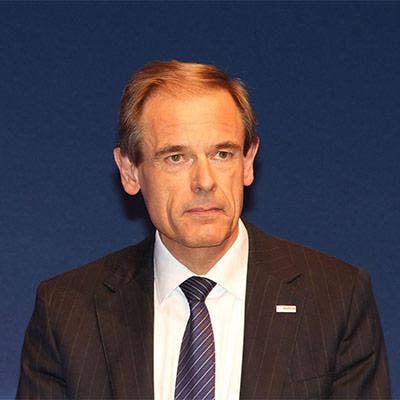
Bosch
TOP EXECUTIVE: Volkmar Denner, Chairman of the Board of Management
The Bosch IoT Suite provides the underpinnings for IoT applications and integrates the features required for pooling devices, users, companies and partners. The suite can manage devices, processes, rules and data, as well as offering enterprise applications including business process management and business rules management, according to the company.
Bosch also has analytics capabilities through its big data processing component, which allows analysts to scrutinize the large volumes of data generated in IoT applications. Through its experience in large-scale IoT projects, Bosch created consulting services that guide companies through the process of an IoT business model development.
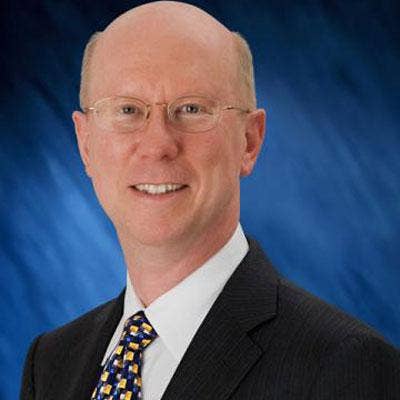
Broadcom
TOP EXECUTIVE: Scott McGregor, President and CEO
Semiconductor manufacturer Broadcom offers a variety of out-of-the-box connectivity platforms for connected devices and IoT -- such as home automation, beacons and connected cars. The Irvine, Calif.-based company's IoT platform, WICED (Wireless Internet Connectivity for Embedded Devices) brings secure Wi-fi and Bluetooth wireless connectivity to various IoT ecosystems.
Broadcom has hardware and software development kits that aim to quickly turn creative IoT ideas into prototypes and ready-for-market devices for both large and small companies.
In May, chipmaker Avago Technologies revealed its plans to acquire Broadcom for $37 billion. The deal is expected to close by the first quarter of next year with Broadcom adopting the new name Broadcom Limited.
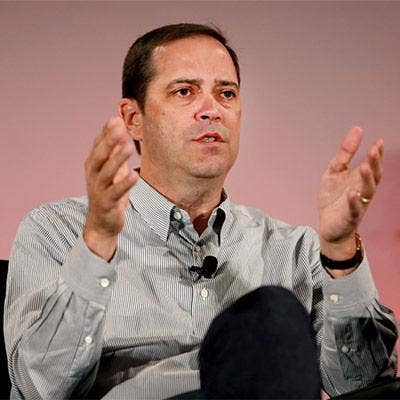
Cisco
TOP EXECUTIVE: Chuck Robbins, CEO
The San Jose, Calif.-based networking giant is striving to become the IoT leader through its networking footprint and extensive channel community. Cisco's new CEO, Chuck Robbins, believes the IoT in the digital age is the biggest opportunity in his company's history.
Cisco has launched an onslaught of IoT-focused products and services this year for its channel to sell as well as many new strategic technology partnerships. Its broad portfolio of IoT infrastructure technologies and products allows for deep analytics insights on data, better security on physical and virtual assets, and the ability to create and deploy IoT applications.
The networking leader has IoT-focus training and certifications for partners as a "playbook" that provides a blueprint and assets outlining how to win sales. It has established plans for eight IoT Innovation Centers across the globe in hot spots such as Barcelona, Berlin, Rio de Janeiro, Tokyo and Toronto. Cisco also recently unveiled plans to acquire IoT and data analytics specialist ParStream.
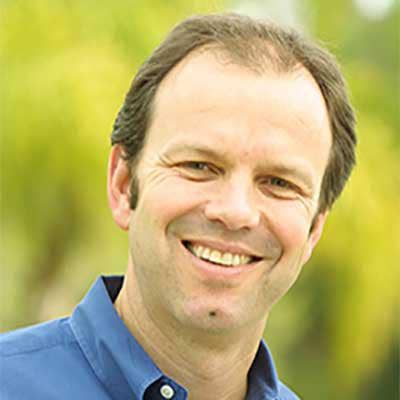
Cradlepoint
TOP EXECUTIVE: George Mulhern, Chairman and CEO
Boise, Idaho-based Cradlepoint specializes in LTE network solutions, which includes ruggedized, purpose-built IoT routers that can be set up in any type of environment. Its network management and Enterprise Cloud Manager platform allows for quick deployment for IoT and M2M solutions with zero-touch configuration, real-time monitoring, analytics and device management.
Cradlepoint's 4G LTE routers are currently deployed in mass transit vehicles, ambulances, police cruisers and even vending machines. In April, the company closed a $48 million Series B funding round with plans to use the money to invest in its channel, international expansion and new acquisitions. Company executives told CRN it also plans to expand its product lines around IoT. "As we start to see the Internet of Things and M2M explode, we are clearly on the forefront of that," said Adnon Dow, senior vice president of global channel sales and alliances at Cradlepoint, in an interview with CRN earlier this year.

Daintree Networks
TOP EXECUTIVE: Derek Proudian, Chairman and CEO
Daintree Networks focuses on the building automation sector of IoT as a provider of wireless network control offerings for things like lighting, thermostats, carbon dioxide sensors and electrical plugs. The Los Altos, Calif.-based company also offers monitoring and data analysis. CEO Derek Proudian says the opportunity for solution providers to deploy enterprise IoT is huge. "IoT is not just a technology that enterprises buy over the counter and start using it. It requires processes and implementation expertise," Proudian said.
The company's recently launched enterprise-grade product ControlScope is driven by an open standards-based architecture with wireless network and software for building control and operation. The architecture ensures a scalable, easy to deploy and easy to use solution that offers interoperability to help customers future-proof their facility.

Davra Networks
TOP EXECUTIVE: Paul Glynn, CEO
The Dublin, Ireland-based IoT startup came out of stealth mode in 2014 with the launch of its IoT RuBAN cloud-based platform, which it says provides solution providers an avenue for rapid deployment of IoT solutions and applications using a single platform. RuBAN takes the data generated from IoT objects and presents it in a way that's easy to visualize and consume. Davra provides a gateway fog controller, IoT asset lifecycle management and business intelligence specifically designed for IoT.
Davra owns a R&D development lab in Dublin and was one of 35 ISVs to join Cisco's new application developer program. The ISV will build cloud services for Cisco Intercloud to help customers capture IoT opportunities.
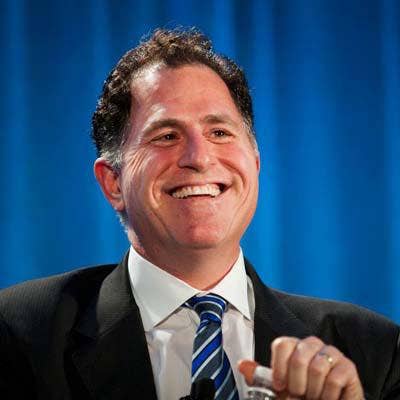
Dell
TOP EXECUTIVE: Michael Dell, Chairman and CEO
Round Rock, Texas-based Dell is betting big with the formation of a new product division focused specifically on IoT. Its first product is the Dell IoT Gateway, which features a dual-core Intel processor resembling a wireless access point that sits on the edge of the network. It helps businesses collect and process data from disparate sensors or automation systems.
Dell says it takes a pragmatic approach to IoT by building on the equipment and data customers already have to enable analytics-driven solutions. The company also provides IoT advisory services as well as IoT application development and integration services.
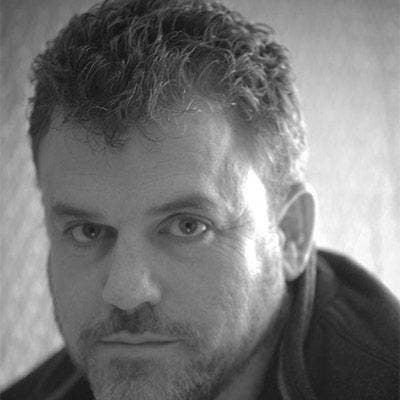
Digital Six Laboratories
TOP EXECUTIVE: Steve Montgomery, Founder and CEO
The Yukon, Okla.-based IoT startup has offerings for the consumer, commercial and industrial markets. Its flagship Whisker.IO product line includes sensors, gateways and modules. Its IoT platform incorporates wireless technology from Semtech that gives its products a range and battery life performances that Digital Six says cannot be matched. For example, its Whisker.IO Engine module is capable of communicating for 4 miles, operating for 5 years from a single set of batteries.
The vendor offers white-labeling of its solutions to integrate them with a customer's applications to create turn-key branded solutions for any vertical market.
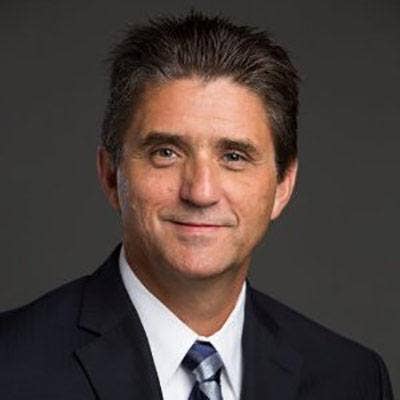
Eurotech
TOP EXECUTIVE: Larry Wall, CEO
Eurotech specializes in IoT solutions geared toward the transportation and retail verticals. Its IoT platform aims to simplify device and data management by connecting distributed devices over secure cloud services. Once devices are deployed, its Everyware Cloud platform allows customers to connect, configure and manage devices throughout the lifecycle. In October, the Columbia, Md-based company released Everyware Cloud 4.1 which extends the features required for software updates to support large-scale IoT deployments by introducing a new process for faster updates that allows customers to go live with their IoT solutions in just a few months.
In the transportation space, Eurotech deploys passenger counters through stereoscopic vision technology, which keeps data of passengers entering and departing public transportation vehicles.
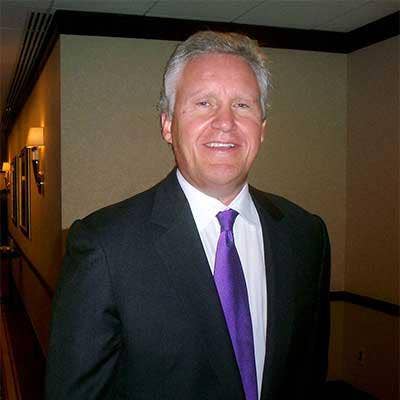
GE
TOP EXECUTIVE: Jeffrey Immelt, Chairman and CEO
GE is jumping into IoT with its cloud-based industrial analytics platform, Predix Cloud, slated to becoming available next year. The platform is designed specifically for industrial data and analytics as a platform-as-a-service. GE says the solution will enable operators to use machine data faster and more efficiently that will save companies billions of dollars annually.
GE also recently unveiled plans to build a new energy business, Current, using IoT to bring together its LED, solar, energy storage and electric vehicle business onto Predix. Using the aggregated data and analysis, GE will gives customers recommendations on how to reduce power levels, generate power onsite and create new revenue streams through technologies like sensors and networked systems in buildings.
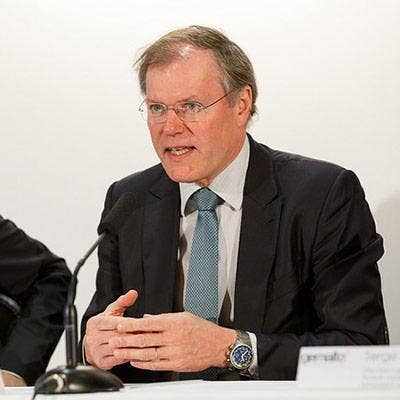
Gemalto
TOP EXECUTIVE: Olivier Piou, CEO
The Austin, Texas-based digital security company provides embedded IoT technology and connectivity. Its secure On-Demand Connectivity solution provides remote provisioning and mobile subscription management that enables instant broadband connectivity to a wide variety of new connected devices.
Gemalto's recently introduced Cinterion Secure Element, a tamper-resistant component embedded in industrial IoT solutions to enable advanced security and lifecycle management. The solution will help protect things such as connected cars and smart meters against threats.
Another products is its cloud-based SensorLogic Application Enablement Platform which translates important data and sends alerts to improve response times.
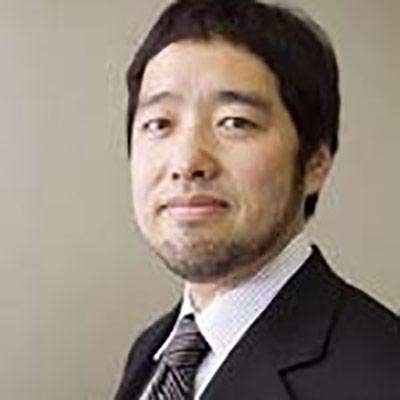
GlobalSign
TOP EXECUTIVE: Ichiro Chujo, Group CEO and Chairman
GlobalSign, a developer of public key infrastructure (PKI), identity and access management (IAM) technologies, is converging IAM and PKI for IoT through its Identity Management Platform for IoT. The Boston, Mass.-based vendor says its platform can build high scale identity management and security into customers mobile and IoT devices.
The company says it can leverage its existing IAM infrastructure to address the growing number of IoT ecosystems, including context-based identity delegation and access control. GlobalSign also launched a new channel program this year to help its partners use its PKI and IAM solutions to secure IoT.
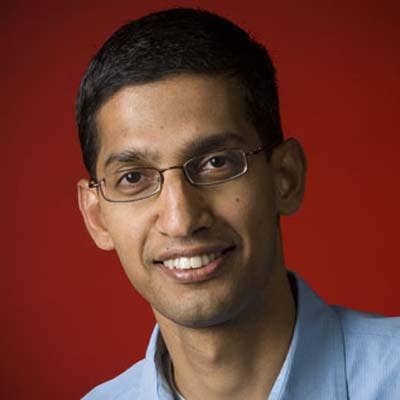
TOP EXECUTIVE: Sundar Pichai, CEO
Google launched its IoT offering, Brillo, in May that manages and stores data collected in device sensors aimed at consumers' homes. The operating system is meant to run on connected devices that have low memory and small processors while using minimum system requirements.
Google's Nest product line is also designed to bring IoT into homes such as through thermostats, fire alarms and security camera.
The Mountain View, Calif.-based company's Google Cloud Platform is building a best in class suite of big data tools aimed at the IoT market such as BigQuery, which allows customers to collect and analyze large volumes of sensor metrics over time.
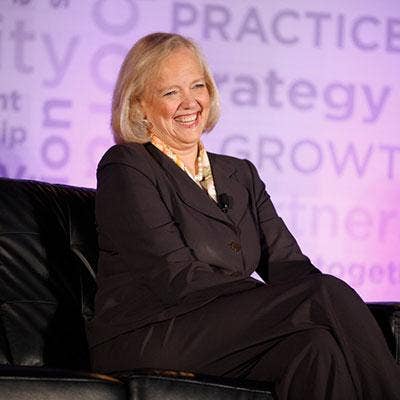
Hewlett-Packard Enterprise
TOP EXECUTIVE: Meg Whitman, President and CEO
Hewlett-Packard Enterprise takes a "solutions-based approach" to the Internet of Things to help partners capitalize on IoT opportunities, as opposed to focusing on one area of the market. HP's integrated IoT-optimized solutions portfolio includes servers, storage and cloud products to enable the back end of IoT.
HP also offers IoT architecture for communications service providers to deliver a standardized end-to-end platform and energy management apps to enable new services for consumers and industries. In terms of targeted applications, HP introduced the HP Energy Management Pack, a vertical-specific application to empower telecommunications and utility companies to securely provide home automation.
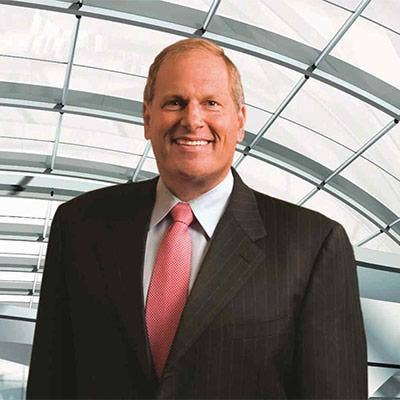
Honeywell
TOP EXECUTIVE: David Cote, Chairman and CEO
The Morristown, N.J.-based multinational conglomerate is honing in on the IoT market with new products as well as forming technology partnerships with the likes of Cisco, Intel and Arrow.
Honeywell's Tridium division has a purpose-built operating system for IoT, Niagara Framework, which connects and translates data from any device or system that manages and optimizes performance in buildings, factories or even cities. The platform contains enterprise security, analytics and professional services.
Through its partnership with Arrow, Honeywell created SenseAbility – an enterprise IoT solution with sensor technology, embedded processing, a secure 802.11 b/g/n wireless connectivity and enterprise services available for a wide range of embedded applications.
In July, Honeywell acquired smart meter and thermal equipment manufacturer Elster for $5.1 billion.
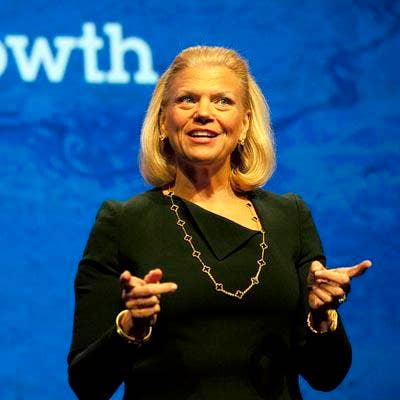
IBM
TOP EXECUTIVE: Ginni Rometty, Chairman, President and CEO
IBM is promising to spend $3 billion over the next four years developing a portfolio of cloud services and software aimed at delivering weather-related IoT services to the enterprise. IBM has formed a partnership with The Weather Company to shift its suite of weather data services to its cloud, with both companies saying they will work on enterprise weather data services catering to the insurance, energy, retail and logistics industries.
The Armonk, N.Y.-based company has launched its broad Smarter Planet initiative, which looks at ways to bring IoT technologies to a variety of sectors, including smart cities and mobile enterprises. IBM in September introduced a new IoT business unit devoted to advancing IoT technologies with a focus on helping partners and customers integrate and gain insights from data.

IFTTT
TOP EXECUTIVE: Linden Tibbets, CEO
The San Francisco-based startup IFTTT (If This Then That) allows companies and consumers to create digital "recipes" that connect devices on its open platform. IFTTT platform can be comparted to a controller or giant switchboard to connect things like Twitter or your home heating system. The platform allows customers to manage all Internet and IoT devices with a press of a button or it can be automated. For example, at a button-press you can switch on your home heating when you leave work or have it automatically turned on at a certain time based on your location.
Another example is that a customer can automatically have any new Instragram photos automatically stored on a Dropbox online storage account. There are over 100 Internet services connected to IFTT including Instagram, Twitter, Dropbox and YouTube.
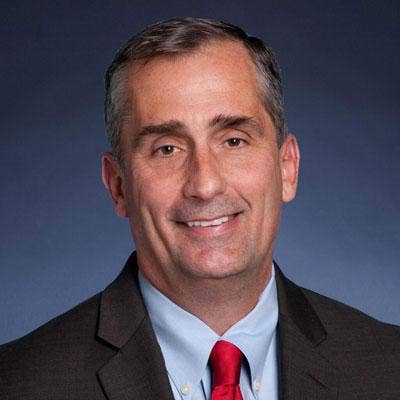
Intel
TOP EXECUTIVE: Brian Krzanich, CEO
Though traditionally a PC semiconductor company, Intel has been capitalizing on the rising Internet of Things market through new end-to-end solutions and products like intelligent gateways and embedded chips.
Santa Clara, Calif.-based Intel's product line in the IoT space has strengthened over the past year, with its IoT Group revenue increasing to $581 million in its most recent quarter, up 10 percent year-over-year.
The Intel Inside IoT platform includes a reference architecture and family of products for its system builder partners. This includes Intel's embedded design center, an Intel IoT Developer Kit with tools and SDKs for developers, Intel IoT gateways, and the Intel Core desktop processor family with C230 or 100 series chipsets.
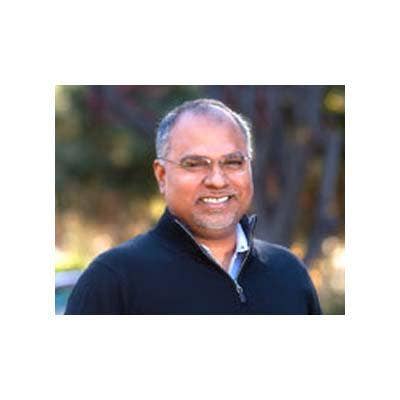
Jasper
TOP EXECUTIVE: Jahangir Mohammed, Founder and CEO
Jasper, an IoT service provider in Santa Clara, Calif., has a software-as-a-service Control Center platform to help companies accelerate their time-to-market strategy and ensure higher service reliability.
Jasper's Control Center includes features such as automated provisioning, real-time visibility and reporting, automated monitoring of services usage, and seamless integration into existing IT systems. The company's Control Center contains solutions for connected devices, connected cars, and enterprise mobility services.
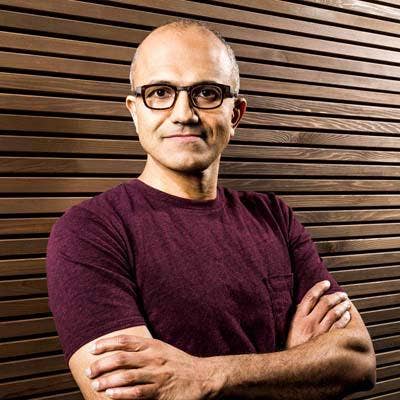
Microsoft
TOP EXECUTIVE: Satya Nadella, CEO
Microsoft tackles the IoT market through multiple product lines, including Windows and its Azure cloud platform. Microsoft's Azure IoT Suite, unveiled in March, was built to capture the data generated by connected "things," integrate the flow of that data and turn it into usable, actionable information. The cloud services aim to help customers monitor assets to improve efficiencies, drive operational performance and use advanced data analytics. Microsoft says the suite was designed to integrate with customers' existing processes, devices and systems, meaning they can jump on the Microsoft bandwagon no matter how far along in their IoT adoption plans they are.
On the device side, with the launch of Windows 10 this summer, Microsoft for the first time included a "small footprint" version of its flagship operating system for IoT devices.

Monnit
TOP EXECUTIVE: Brad Walters, Founder and CEO
Midvale, Utah-based IoT provider Monnit, which bills itself as a provider of low-cost monitoring offerings, this summer released Monnit Mine, a software platform that can be used to integrate sensors and gateways with software systems. The integration allows Monnit wireless sensors to communicate with management platforms to remotely monitor information such as temperature, light, humidity, vibration and movement.
Monnit partners can sell Monnit-branded products or brand the solutions as their own.

MyDevices
TOP EXECUTIVE: Kevin Bromber, CEO
MyDevices, Calabasas, Calif, recently launched an IoT platform-as-a-service that aims to help customers bring connected devices to market faster. The company develops middleware for connecting products, managing data and helping clients interact with their customers. The platform's capabilities revolve around security and management, equipping customers with authentication and access control, device management, analytics tools, and a highly-scalable storage system for handling big data. The MyDevices platform is also device-agnostic, and connects to anything—from sensors, appliances, wearables, smartphones, to PCs.
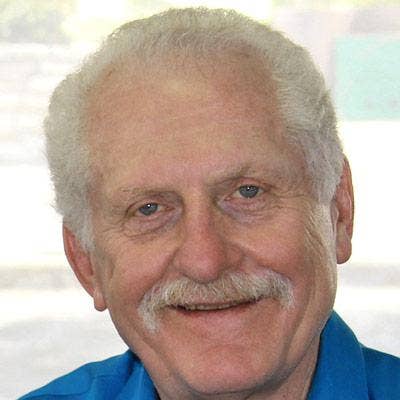
National Instruments
TOP EXECUTIVE: James Truchard, President and CEO
National Instruments offers an array of software and end-to-end analytics products for customers in the industrial Internet of Things market. Included in Austin, Tex.-based National Instruments' IoT portfolio are sensors and actuators, distributed intelligent systems and a suite of software tools for analyzing, collecting and reporting big analog data.
Most recently, National Instruments launched next-generation control systems optimized for the Industrial IoT, including CompactRIO, FlexRIO, and Single-Board RIO controllers.

Oracle
TOP EXECUTIVES: Mark Hurd, Safra Catz, Co-CEOs
Oracle pledges to help customers "manage the complexities of the Internet of Things, from devices to applications, big data to analytics, security and scalability, all in the cloud." Oracle's Internet of Things cloud service enables customers to analyze data from connected devices in real time. Oracle gives customers capabilities to connect through device virtualization, high-speed messaging, and end point management features, as well as analyze data through stream processing and data enrichment features. The solution can be integrated through enterprise connectivity and API-based integration with Oracle apps and IoT devices.

Panasonic Corporation Of North America
TOP EXECUTIVE: Joseph Taylor, Chairman and CEO
Secaucus, N.J.-based Panasonic, a largely consumer product company, has its own role to play in the Internet of Things, through industrial automation products and wearable solutions. With industrial automation, the company provides factory automation devices, as well as sensors specifically for automotive or industrial applications. Most recently, the company launched a cloud service toolkit containing modular software components to support the development of IoT solutions.

PTC
TOP EXECUTIVE: James Heppelmann, President and CEO
PTC offers a variety of Internet of Things offerings, including the ThingWorx IoT Platform for application developers. ThingWorkx supports rapid application development through the use of model-based development and mashup tools. PTC, Needham, Mass., also offers the Axeda Machine Cloud, which provides cloud-based services and software for managing connected products, as well as the Coldlight Neuron Predictive Analytics Platform to automatically analyze data, detect patterns, and send information to any application or technology.
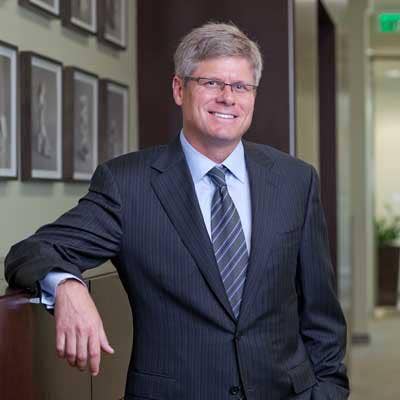
Qualcomm
TOP EXECUTIVE: Steven Mollenkopf, CEO
Semiconductor maker Qualcomm, San Diego, flaunts wireless solutions for a broad array of vertical markets, including the automotive market, smart homes, smart cities, health care and education.
At the heart of these solutions are the Qualcomm MDM9207-1, a scalable chipset with Cat 1 LTE technology at its core. This chipset contains support for Linux OS-based platforms, industry-leading 3G and 4G LTE multi-band support, and scalable software for reduced design complexity.
Most recently, Qualcomm introduced new LTE modems designed to support optimized cellular connectivity for the growing array of devices and systems in the Internet of Things.
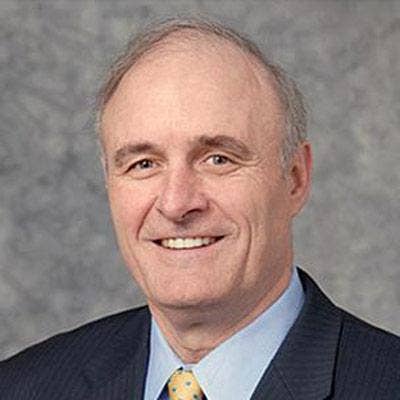
Rockwell Automation
TOP EXECUTIVE: Keith Nosbusch, Chairman and CEO
Milwaukee, Wis.-based Rockwell Automation, which focuses on industrial automation and information solutions, has built up solutions and services in the connected enterprise to help operations managers manage and improve manufacturing and industrial processes. Rockwell Automation's portfolio, which includes connected components, intelligent motor control capabilities, integrated architecture, and on-machine solutions, helps drive the industrial Internet of Things for OEMs. Now the company is building on a tight partnership with Cisco to help push its IoT agenda even further.
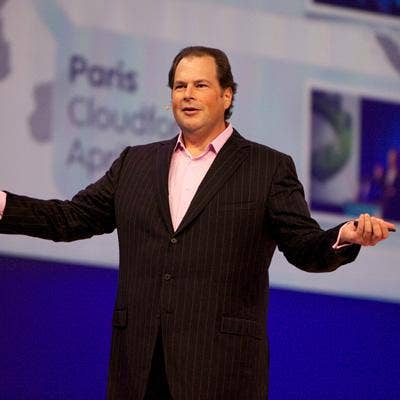
Salesforce.com
TOP EXECUTIVE: Mark Benioff, Chairman and CEO
San Francisco, Calif.-based cloud CRM vendor Salesforce.com has tapped into the Internet of Things ("which the company dubs the "Internet of Customers") through Salesforce IoT Cloud, software Salesforce says will help businesses process massive quantities of data, build business rules with simple tools, and engage with customers in real time. Thunder, Salesforce's scalable event processing engine, powers IoT Cloud, which is meant to be used by business users rather than developers or engineers. Salesforce IoT Cloud will be available early next year.
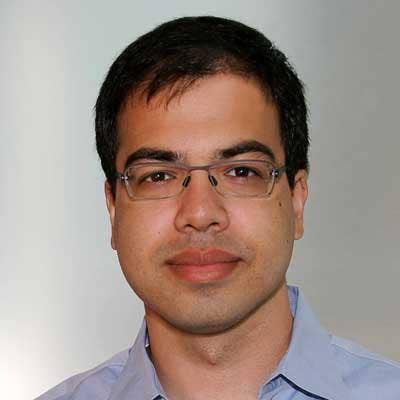
Samsara
TOP EXECUTIVE: Sanjit Biswas, Founder and CEO
Three years ago Sanjit Biswas was part of the team that sold Meraki to Cisco for $1.2 billion. Now Biswas and partner John Bicket are back with Samsara, an IoT-focused startup that came out of stealth mode in May. Samsara's vision is to allow customers to deploy sensors by the thousands to gather more data and better insight for a business than what is currently available in the market. The San Francisco startup plans to disrupt the traditional sensor model with an integrated, software-centric solution that includes hardware, data analytics and networking software.
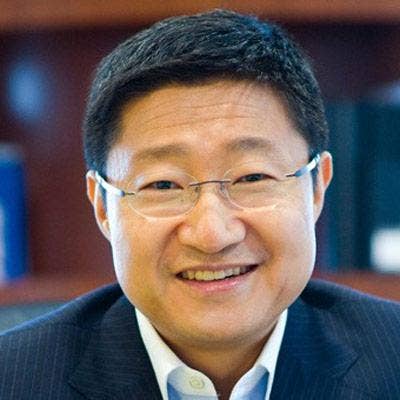
Samsung Electronics North America
TOP EXECUTIVE: Gregory Lee, President and CEO
While Samsung Electronics is known for its smartphones, the Ridgefield Park, N.J.-based company earlier this year delved into the Internet of Things through its Artik chip platform. Samsung's Artik modules, or "building blocks" for wearables and other connected devices come with built-in connectivity and an open software environment, and are tailored for the Internet of Things, the company says. Artik includes three hardware modules that bundle CPUs, GPUs memory and storage with wireless network, sensors, and video decoding features. Artik applications extend from wearable devices to industrial and commercial lighting applications.
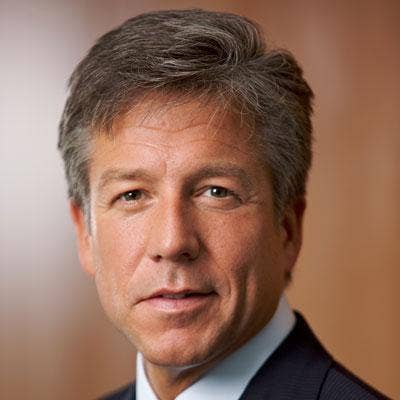
SAP
TOP EXECUTIVE: Bill McDermott, CEO
Software vendor SAP has its fingers in a number of Internet of Things pies through products such as its Predictive Maintenance and Service offering, Networked Logistics Hub, Connected Manufacturing, Augmented Reality Apps, and the HANA cloud platform for the Internet of Things. It touts the latter as an in-memory IoT platform that helps customers quickly develop, deploy, and manage real-time IoT and applications.
The German company's IoT platform drives services across various applications, including connected wind farms, connected construction, health care, connected vehicles, and connected retail.

Sierra Wireless
TOP EXECUTIVE: Jason Cohenour, President and CEO
Sierra Wireless comes at the Internet of Things from all angles with a lineup of hardware, software and services offerings. The company's portfolio includes embedded wireless modules and gateway offerings as well as its IoT Acceleration platform, which integrates its hardware with managed connectivity services.
It also provided the reference architecture for MangOH, an open-source IoT hardware platform.

Skyworks Solutions
TOP EXECUTIVE: David Aldrich, Chairman and CEO
Skyworks Solutions, headquartered in Woburn, Mass., makes semiconductors that drive applications across verticals, such as the connected home, industrial, and medical markets. But it has also made its mark in the Internet of Things market through its portfolio of RF switches, which include analog control ICs to drive Internet of Things applications, such as the connected home and smart lighting.

Smartvue
TOP EXECUTIVE: Martin Renkis, Founder and CEO
Enterprise cloud services company Smartvue offers a visual intelligence platform for surveillance systems, and contains a go-to market strategy through both through OEMs and VARs.
Smartvue's portfolio focuses on developing the backbone for storage, management, security and distribution for the Internet of Things.
The Nashville, Tenn.-based company in April secured $15 million in financing from Fortress Investment Group to bolster its IoTV (Internet of Things Video) solutions. The new funds will help support the company's work with Internet Service providers, IoT device companies and cloud storage providers, according to Smartvue.

Tempered Networks
TOP EXECUTIVE: Jeff Hussey, Co-founder, President and CEO
Seattle, Wash.-based Tempered Networks is a cyber security company whose product cloaks its customers' critical systems and high-value endpoints. Tempered Networks says its offering for securing IoT devices also enables network segmentation to reduce the organizations' attack surface and simplify their infrastructures.
Tempered Networks is 100 percent partner driven, and in September, the company launched a new partner program targeted at network security and automation-focused partners.
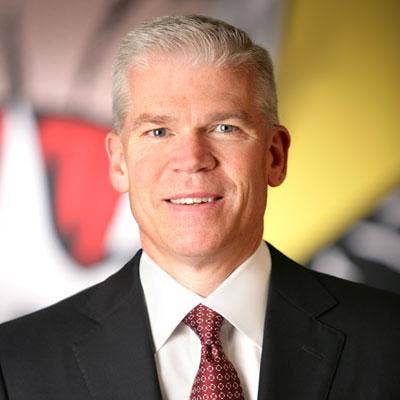
Texas Instruments
TOP EXECUTIVE: Rich Templeton, Chairman, President and CEO
Semiconductor manufacturing company Texas Instruments, headquartered in Dallas, Texas, provides the building blocks to enable the Internet of Things, from nodes to gateways to the cloud.
In terms of Internet of Things products, Texas Instruments' portfolio includes low-power microcontrollers, its low-energy, scalable Sitara processors, and power management integrated circuits as well as design resources for designers. The company also works with vendors like IBM to enable cloud solutions for its products.
Texas Instruments' products work across a variety of IoT applications, including home automation, smart cities, smart manufacturing, wearables and automotive.
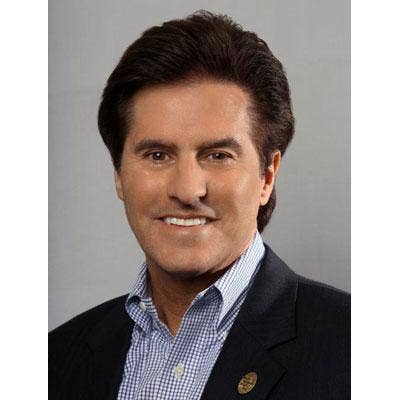
Verizon Enterprise Solutions
TOP EXECUTIVE: Christopher Formant, Senior Vice President and Global President
Basking Ridge, N.J.-based Verizon Enterprise Solutions drives the Internet of Things with a portfolio of machine-to-machine products services aimed at powering smart cities, connected cars, and wearables. The company recently unveiled its ThingSpace platform, which is a web-based, self-service interface allowing developers to create IoT applications. Verizon has readied its 4G LTE network to handle IoT endpoints by developing a core IoT network within its LTE architecture. This architecture will be launched in Q1 2016. Verizon also has revealed the availability of its new chipset, which reduces the cost of developing a device for IoT.
The company recently announced its plans to leverage its channel partner ecosystem to bringing its IoT solutions to the forefront.

Webroot
TOP EXECUTIVE: Dick Williams, President and CEO
Webroot, which provides Internet security, business security solutions and threat intelligence services, has been extending its portfolio to secure Internet of Things connected systems with embedded micro-agents.
The Broomfield, Co.-based company's portfolio includes an IoT Security Toolkit that contains high-performance, low-system impact device against, threat intelligence services that can be integrated into IoT gateways and platforms, and cloud-based secure web gateway services for filtering traffic between devices.
Webroot provides MSPs, resellers and system integrators with enhanced privacy and performance services.

Wireless Glue Networks
TOP EXECUTIVE: Peter McCabe, CEO
Danville, Calif.-based Wireless Glue Networks provides an "intelligent hub" for the Internet of Things. This hub includes products like protocol translation technology to convert IoT data into common language for analysis in the cloud, as well as a real-time data pipe called Rules Engine, which provides real-time monitoring and control through extracting data at the edge. Wireless Glue Networks also provides "snap on" solutions, as its architecture can be embedded inside on-premise gateways and servers, and works with other edge-based platforms.
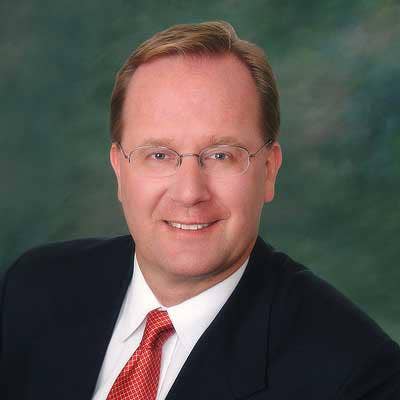
Zebra Technologies
TOP EXECUTIVE: Anders Gustafsson, CEO
Zebra Technologies, a Lincolnshire, Ill.-based company whose products provide real-time visibility into organizations' assets and transactions, delves into the Internet of Things through its Zatar platform.
The Zatar platform provides a standards-based approach to connectivity and control of devices, along with open APIs to create apps, onboard devices and to enable collaboration.
Zatar also includes location services based on Apple's iBeacon technology for recognizing the presence of iOS-based and other devices.